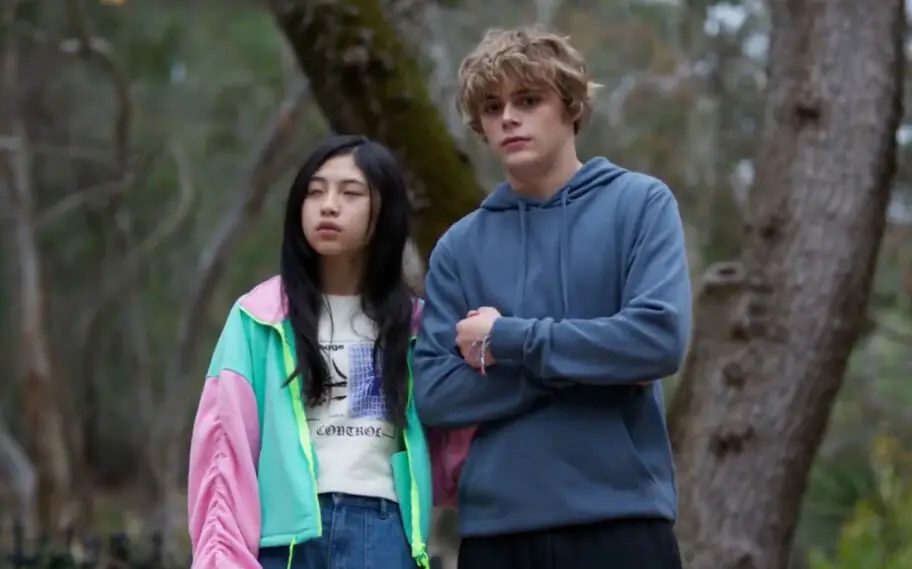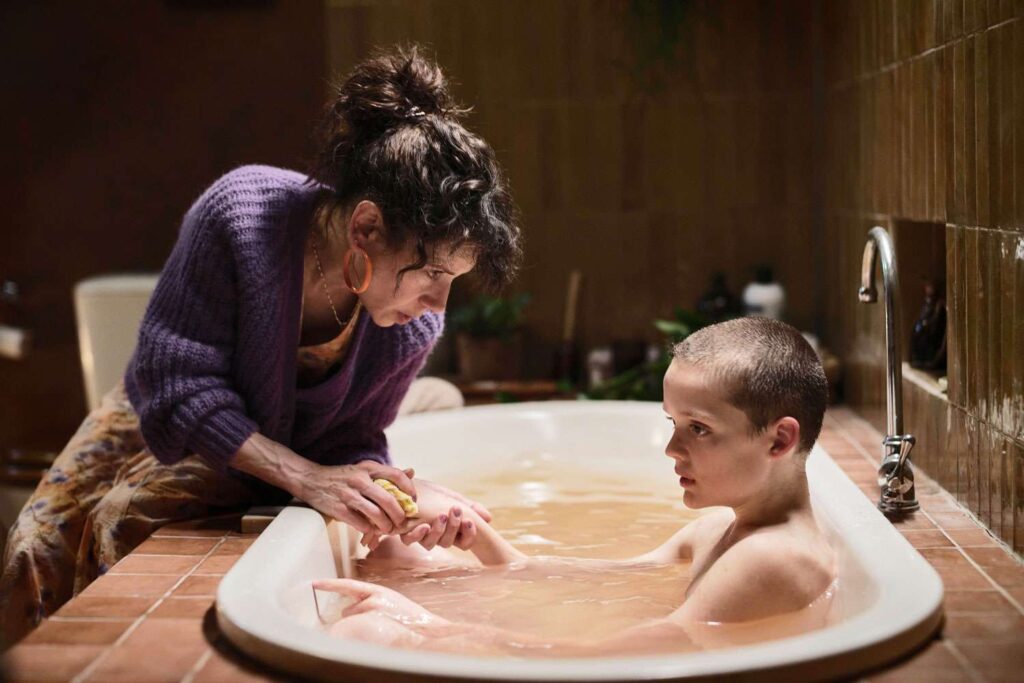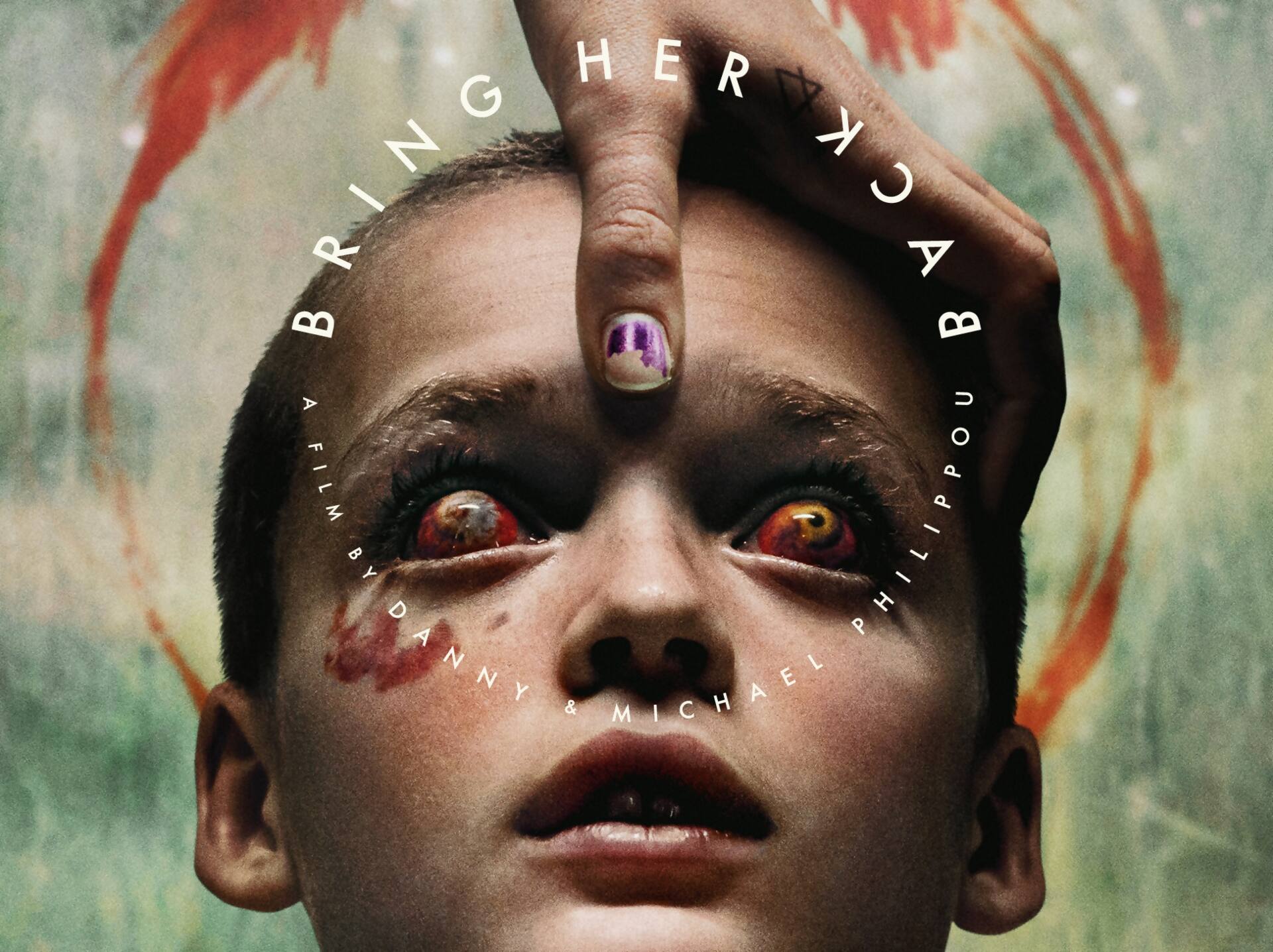After Danny and Michael Philippou’s well-received debut, Talk to Me, they released another thrilling horror film this year: Bring Her Back. Like Talk to Me, it’s essentially the trust and bond between friends and family members that are at stake.
We see things through the point of view of a pair of stepsister and brother: 17-year-old boy Andy and Asian girl Piper, who is visually impaired. They found their father dead after a stroke in the shower. This vision—therefore, Piper was less mentally harmed—haunted Andy throughout the film. Their bond is the most touching element in the film. Even though they don’t share the same biological mother or father, it’s their care and love for each other that support them through the loss of their father. The portrayal of their bond is natural: from their bickering with inappropriate jokes at the beginning to their secret code “grapefruit” as a code for “being honest.”

Besides the visual body horror, the biggest element in horror is the step-siblings’ new guardian, Laura, played by the brilliant actress Sally Hawkins. At first, her role is extra-friendly with an ounce of ambiguity and eccentricity. As a former counsellor herself, she used her tactics to get close with Andy to get the information she wanted and then used the information to break the trust between Andy and Piper. Even though they’re children, they would be only truly defenseless after they lost each other and in isolation. Her fabricated psychoanalysis of Andy is one of the most frustrating scenes in the film.When Andy told the agency that the other fostered child, Oliver, was actually a missing child, the social worker revealed that Laura was a former counsellor at the same agency, which was a chilling twist.
This is not the first time we see the role of therapist/counsellor as a supervising role of threat instead of being someone who we can undoubtedly trust the most. In Ari Aster’s surrealist horror film, Beau Is Afraid, the therapist of the protagonist was revealed at the end to be bought off by his mother and give out his personal information. Along with the popularity of therapy sessions for the public, the fear of betrayal and exposure from the person you trust to regularly talk about your deepest emotional turmoils seems to increase as well. Laura was also in the position of new guardian mother: the external horror invaded Andy and Piper’s two-person family, becoming an internal threat.

The scenes where Oliver, whose real name is Connor Bird, ate non-edible objects gave me so much physical dread. His character was constantly at the border between a quiet observer and the source of horror, and the anticipation of it was truly horrifying. On the other hand, the tone for the climax of this film is half heart-pounding nervous and half heartbreaking. Andy pushed his courage due to his protecting instincts and love for his sister. We see Andy was also a child himself, who did workouts and was eager to grow up to be the guardian of Piper, which makes his death so tragic.
Despite the disability, Piper saved herself with her trust for Andy, and her intelligence and mental strength spiked. After a desperate try with the occult methods to resurrect her daughter, Laura finally accepted her death and held the dead body, lying in a fetal position in the swimming pool. Laura remained in that position in the pouring rain, returning to the embrace of fate and death. As a counsellor herself, Laura failed to grieve properly and denied it completely, even at the cost of others. In the end, Piper heard the sound of an airplane passing through—another code between her and Andy that means a soul went to heaven—and smiled. Piper grieved, remembered, and accepted his brother’s death.

Comments